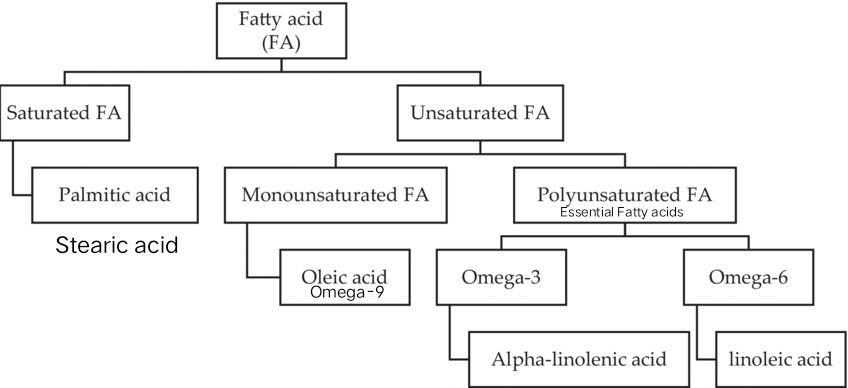Oleochemical Fatty Acids: Analytical Properties and Applications
📘 Fundamental Concepts Overview
一、Molecular Structure and Property Analysis
1.1 Classification System
-
Short-chain (C4-6):
-
High volatility
-
Rapid metabolic utilization (e.g., butyric acid)
-
-
Medium-chain (C8-12):
-
Rapid energy supply characteristics (e.g., lauric acid)
-
-
Long-chain (C14+):
-
Prominent structural functionality (e.g., stearic acid)
-
-
Saturated fatty acids (e.g., palmitic acid):
-
High melting point
-
-
Monounsaturated fatty acids (e.g., oleic acid):
-
Improved low-temperature fluidity
-
-
Polyunsaturated fatty acids (e.g., linoleic acid):
-
Significant bioactive properties
-
1.2 Critical Physicochemical Indices
|
Analytical Parameter |
Analytical Parameter |
Representative Example |
|
Iodine Value (IV) |
Unsaturation quantification |
Soybean oil (IV=130) |
|
Acid Value (AV) |
Free fatty acid concentration |
Refined palm oil (AV≤0.1) |
|
Saponification Value (SV) |
Mean molecular weight |
Coconut oil (SV=250-260) |
二、Contemporary Production Methodologies

三、Industrial Application Domains
-
Surfactant systems: C12-18 chain length optimization for foam stabilization
-
Emulsifying matrices: Oleate-based emulsion systems
-
Fragrance encapsulation: Lipid-based microencapsulation technologies
-
Metal surface treatment: Stearic acid-derived corrosion inhibitors
-
Renewable fuels: Transesterification to fatty acid methyl esters (FAME)
-
Additive manufacturing: Phase-change material matrices
-
Rumen-protected lipids: Calcium salt stabilization techniques
-
Immunonutrition: Essential fatty acid ratio optimization (ω-3:ω-6)
-
Product quality enhancement: Conjugated linoleic acid supplementation
四、Emerging Technological Developments
🔬 Advances in Synthetic Biology
-
Oleaginous yeast (Yarrowia lipolytica) lipid production efficiency enhanced to 85%
-
CRISPR-mediated Δ9-desaturase gene editing for optimized fatty acid profiles
🌱 Green Chemistry Innovations
-
Integrated supercritical CO₂ extraction-hydrolysis hybrid technology
-
Photocatalytic CO₂ conversion to formic acid process (Faradaic efficiency >90%)
📊 Intelligent Application Development
-
Thermo-responsive fatty acid-based hydrogels (5-45℃ phase transition range)
-
pH-sensitive nanocarrier systems for targeted drug delivery (loading capacity >85%)






